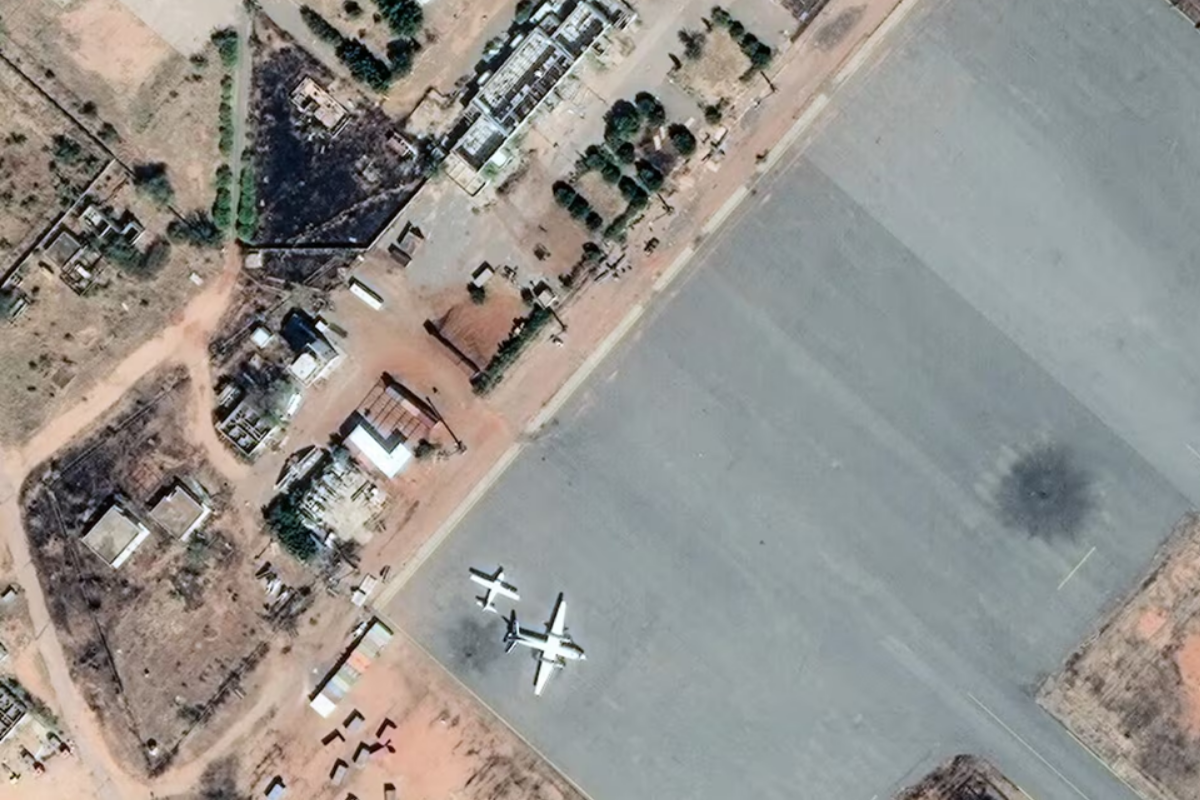Sudan’s Rapid Support Forces (RSF) have begun operating advanced drones from a base in Darfur. Satellite images confirm the presence of at least three unmanned aerial vehicles (UAVs) at Nyala Airport, signaling a major shift in the ongoing conflict.
“The RSF is increasing its air capabilities, which could shift the battlefield,” a military analyst said. The drones appear to be Chinese-made FH-95 models, which are capable of both surveillance and precision airstrikes.
Images taken between December 2024 and January 2025 show military cargo shipments arriving at Nyala. At least ten flights delivered new equipment, reinforcing RSF forces in the region.
The drones have reportedly been used in recent strikes against key infrastructure. The Sudanese Armed Forces (SAF) accused the RSF of targeting power transformers at the Merowe Dam, a critical energy source.
These attacks have caused widespread blackouts in Northern State, disrupting electricity supplies for civilians. In response, SAF airstrikes have hit RSF positions in Nyala, attempting to neutralize the new threat.
The source of the RSF’s drone technology remains unconfirmed. Sudan’s government has warned that any foreign assistance to the RSF could escalate the war and prolong the humanitarian crisis.
Fighting between the RSF and SAF has devastated Sudan since April 2023. The conflict has led to thousands of deaths and the displacement of millions, worsening an already dire humanitarian situation.
The RSF has gained control over key regions, particularly in Darfur, where it has established strongholds. Meanwhile, the SAF continues to defend Khartoum and eastern Sudan, maintaining its grip on the capital.
International observers warn that the conflict could further intensify. Military experts believe drone warfare gives the RSF a significant advantage, allowing them to strike with precision while reducing their own casualties.
The United Nations has expressed growing concerns over civilian casualties from drone strikes. Attacks in urban areas have increased risks for non-combatants, leading to calls for restraint from both sides.
Diplomatic efforts to end the war have largely failed. Negotiations in Jeddah between Sudanese factions have not resulted in a ceasefire, leaving little hope for a peaceful resolution in the near future.
Western governments are closely monitoring arms shipments to Sudan. The United States and the European Union have condemned external support for either side, fearing that foreign involvement could deepen the crisis.
Humanitarian conditions in Sudan continue to deteriorate as the conflict drags on. Aid organizations face immense challenges in delivering food and medical supplies to affected regions.
The war has also destabilized Sudan’s neighbors, leading to regional security concerns. Chad and South Sudan have struggled with an influx of refugees and increasing cross-border violence.
The RSF’s use of advanced drones marks a turning point in the conflict. Their growing air capabilities could shift the balance of power, further complicating efforts to bring an end to Sudan’s devastating war.




